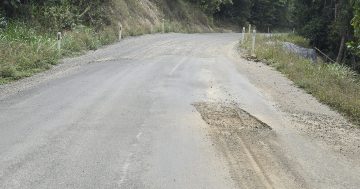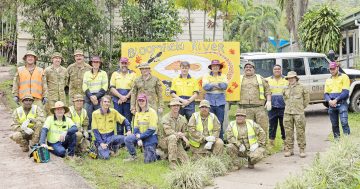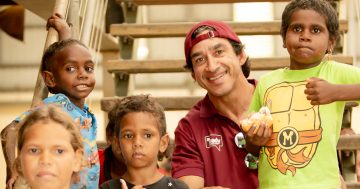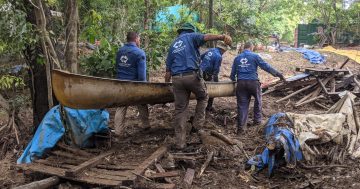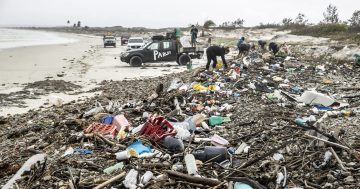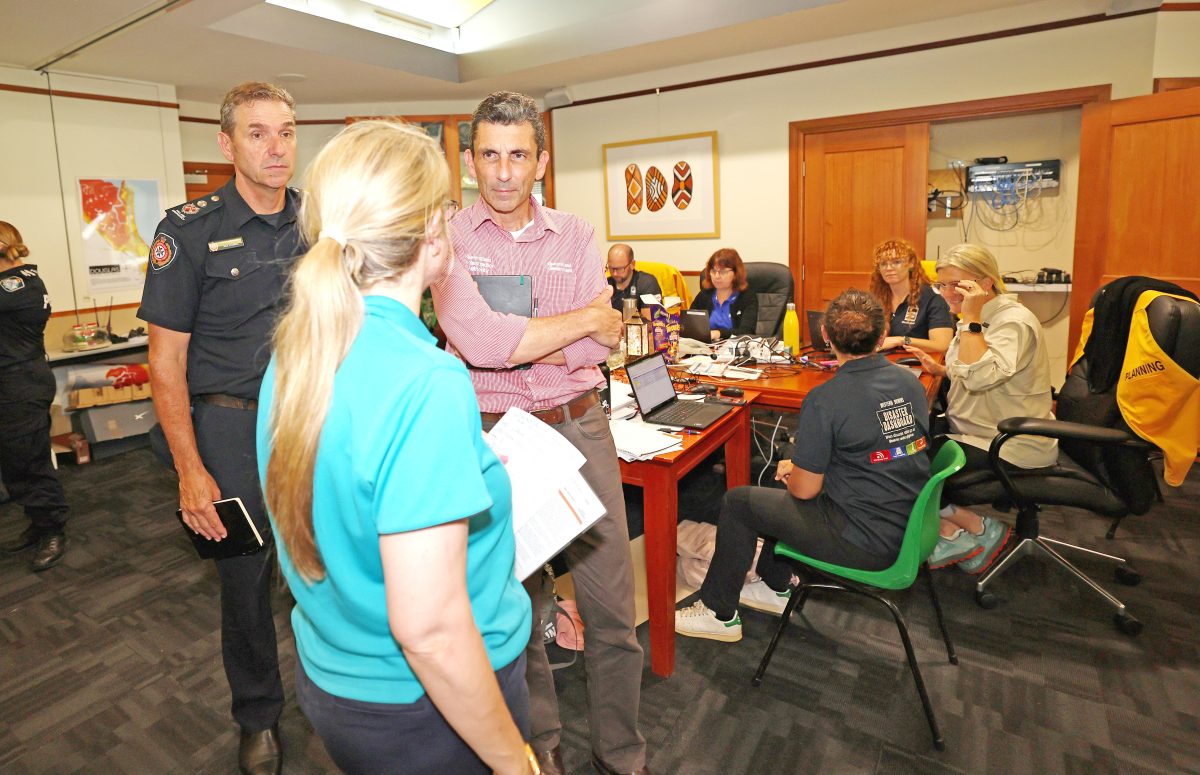
Deputy state recovery coordinator Mike Wassing (left) and QRA CEO Jake Ellwood have worked closely with councils that were impacted by ex-TC Jasper.
Coordinating the clean-up and recovery of one of the worst natural disasters to hit the Far North has been no easy task. Queensland Reconstruction Authority deputy state recovery coordinator MIKE WASSING explains some of the steps that have been taken locally …
Since ex-Tropical Cyclone Jasper left a trail of destruction across Far North Queensland, the Queensland Reconstruction Authority has worked closely with the councils of the disaster-impacted local government areas.
Queensland Reconstruction Authority CEO Jake Ellwood and QRA officers, including myself, have maintained a constant presence in the north since the disaster unfolded.
In addition to coordinating and overseeing the recovery operation, QRA officers have helped with damage assessments and assisted councils to dispatch emergency supplies to isolated communities using Australian Defence Force and commercial maritime vessels.
The impacts on people and critical infrastructure is almost beyond belief with the devastation of communities on the Bloomfield River ranking as the worst I have seen.
QRA has worked with impacted local councils, state agencies and our federal counterparts, the National Emergency Management Agency, to provide a range of support services for people hardest hit by ex-Tropical Cyclone Jasper.
The massive recovery operation has seen boots on the ground rotations of personnel from several agencies including Queensland Fire and Emergency Services, the SES, ADF, and Disaster Relief Australia.
Their work has focused on providing sustainable access, clean-up and waste removal, reconnecting power, and re-establishing a reliable water supply in the region.
It’s slow, laborious work in atrocious and dangerous conditions.
Helicopters and barges have been used to supply essential items including food, water, and medical supplies.
Ergon has done incredible work to restore power poles while groups such as Indigenous rangers, the Red Cross, the Salvation Army, and various community groups have pitched in doing what they can to help out.
Clean-up efforts have targeted the worst-impacted areas at Ayton, Bloomfield, Degarra and Wujal Wujal.
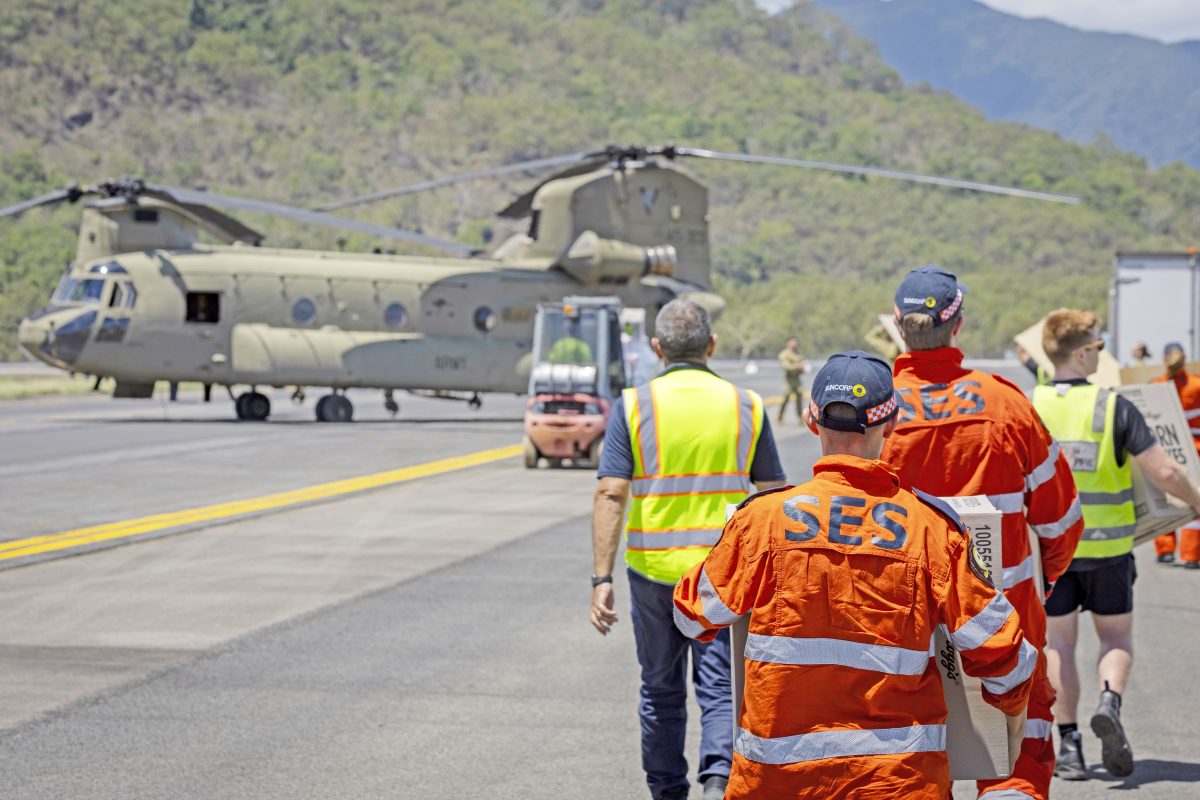
Recovery operations have involved many agencies including the ADF and SES volunteers.
Work in those areas has been made all the more difficult by their inherent isolation, access difficulties, and the threat of further bad weather with the arrival of the monsoon season.
Resources have been prioritised to maximise the benefit to all impacted communities taking into account that different councils will have different priorities and requirements.
First and foremost, we have been making sure people have a safe place to stay, whether it’s in their home or temporary accommodation.
QRA worked to provide safe and appropriate temporary accommodation for residents who declined the offer to be relocated to other areas prior to the flooding, an offer that is still available to residents in Degarra.
We have also worked with councils and a range of recovery agencies to provide respite options for impacted residents who choose to remain in heavily affected areas and we encourage people to take advantage of those options.
Across Far North Queensland, 262 households are in emergency accommodation.
QRA understands the impacts this disaster has had on people and we know the road to recovery will be long and there will be frustrations. That is why we prioritised providing health services, including mental health services, and we encourage people to use them.
Anyone needing assistance should call the Community Recovery Hotline on 1800 173 349 or visit www.qld.gov.au/disasterhelp.
Additionally, Lifeline has established a dedicated 24/7 phone number (1800 116 671) for affected communities across FNQ.
Community events are also being planned across impacted areas to lift spirits of local residents.
QRA activated a range of assistance measures through the joint Commonwealth-State Disaster Recovery Funding Arrangements (DRFA) for councils and residents in the local government areas impacted by Jasper.
That assistance includes Counter Disaster Operations for the immediate response to the disaster, including the removal of fallen trees, debris clean-up, and the establishment of evacuation hubs.
A further $1 million Local Recovery and Resilience Grant is available to help address localised social and community recovery needs, including the provision of temporary housing and local transportation.
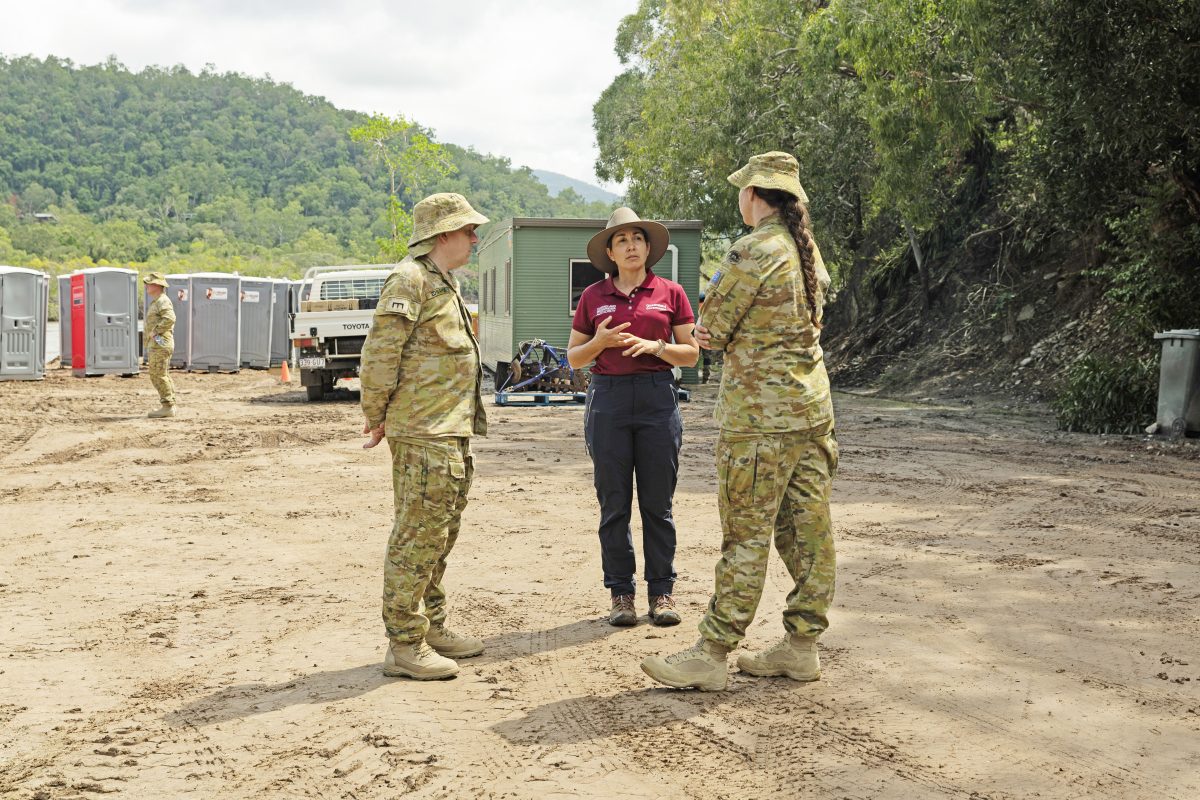
Queensland Reconstruction Authority Director of Integration and Coordination, Dianne Grey (centre) with ADF personnel viewing impacted areas along the Bloomfield River.
Councils can also claim for the restoration of essential public assets which supports the longer-term recovery of essential damaged infrastructure like roads and bridges.
Other assistance measures available include Extraordinary Disaster Assistance Grants, low interest loans, freight subsidies, and an extraordinary disaster assistance package including a $29.95 million FNQ Tourism Recovery and Resilience Program and a $20 million Clean-up Program.
Disaster assistance is also available to residents directly impacted by the disaster.
As at 17 January 2024 more than $6.7 million in personal hardship assistance grants has been approved, benefitting 37,840 people.
Where possible, recovery hubs have been established to provide impacted residents with the assistance they need.
QRA understands this is an incredibly difficult time for those impacted.
There are multiple issues across nearly every aspect of life to be addressed and the reasonable expectation is that recovery will be measured in months and in some instances years.
We remain dedicated to facilitating requests for assistance and grateful to the many government agencies, businesses and community groups for their support and resources.



